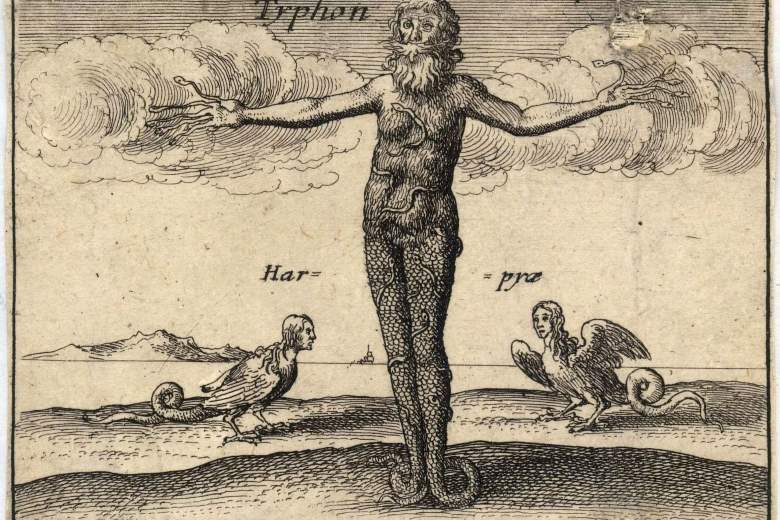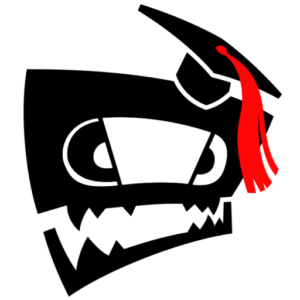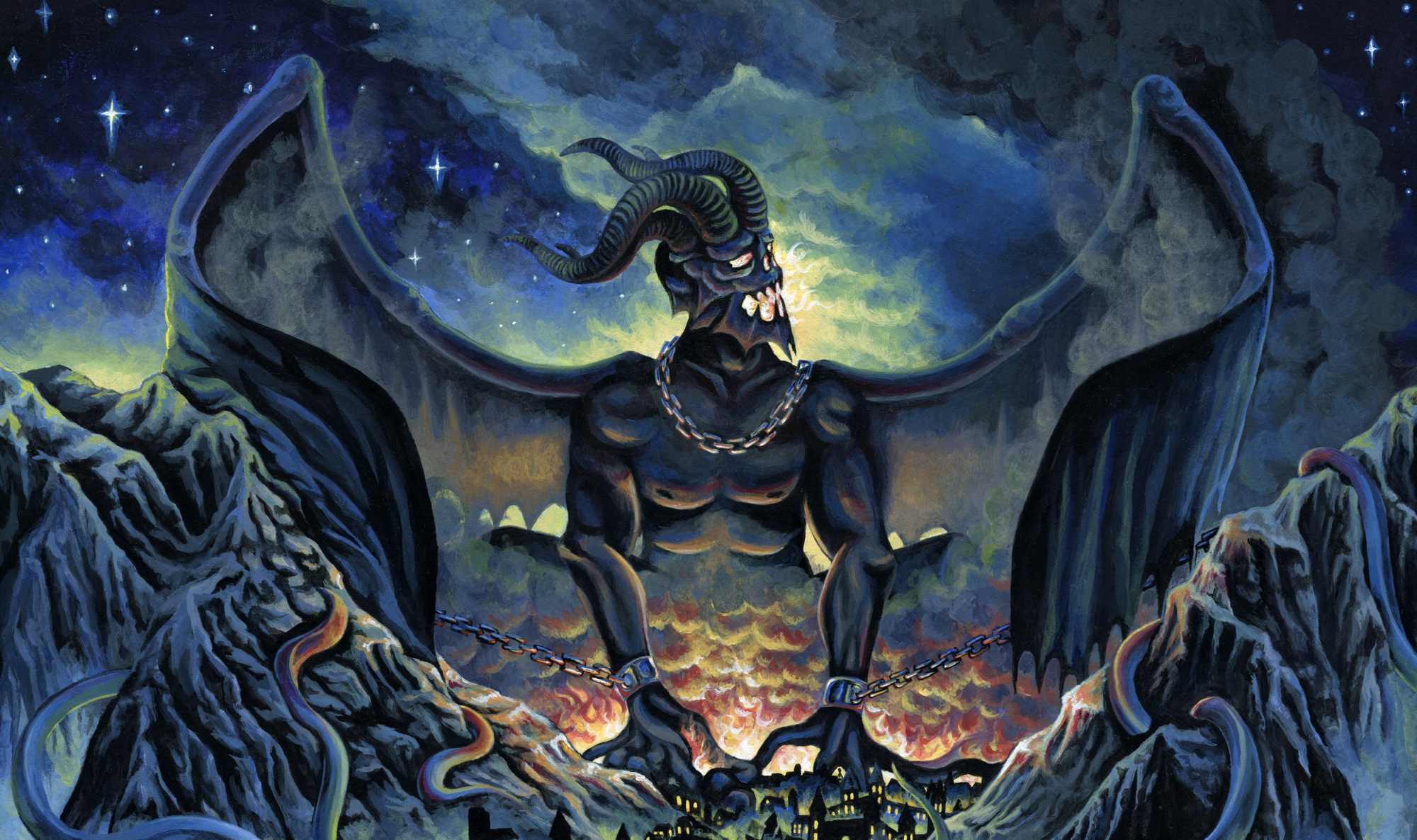The monstrous and terrifying creature Typhon, also known as Typhoeus, was a prominent figure in Greek mythology. He was associated with chaos, storms, and other destructive natural forces.
The origins of Typhon go back to the ancient Greek poet Hesiod, who described the creation of this monstrous being in his poem “Theogony.”
Typhon’s mythology symbolizes the ancient Greek understanding of the potent and devastating forces of nature. He represented the immense obstacles that the gods had to overcome to maintain order and control in the world.
Chaos Monster Typhon’s Appearance
In Greek mythology, Typhon, the chaos monster, portrayed terrifying and grotesque features.
Typhon was a colossal and fearsome being who was frequently portrayed as possessing multiple dragon heads, eyes that emitted flames, and numerous other horrifying attributes. His lower body was said to be a mass of serpents, and he had wings that could blot out the sun. Notably formidable, Typhon posed a substantial danger to the deities of Mount Olympus.
He was a strong and incredibly formidable opponent in his battle against the Olympian gods. Typhon’s appearance combines terrifying and unnatural elements, symbolizing his role as a representation of chaos and destruction in Greek mythology.
It’s important to note that there may be variations in the depictions of Typhon’s appearance in different works of art and literature. Based on this, the common theme remained that he was a monstrous and chaotic force that posed a significant threat to the Olympian gods.
Origins of The Typhon Monster
Typhon, the father of monsters, originates in Greek legend in the writings of Hesiod, an ancient Greek poet who composed the epic “Theogony.” Hesiod provided a detailed account of the genealogy of the gods and the creation of the cosmos, which includes the birth of Typhon.
According to Hesiod’s narrative, Typhon was the product of the union between two ancient beings.
His mother, Gaia (or Gaea), embodied the concept of the ancestral mother Earth in Greek folklore. As one of the primordial deities, she symbolized the physical Earth itself.
His father, Tartarus, represented a deep and dark abyss located within the underworld. This abyss is closely associated with the confinement of powerful and evil entities, including the Titans.
The mythographer Apollodorus, who lived during the 1st or 2nd century AD, further explains that Gaia gave birth to Typhon out of anger towards the gods. Consequently, Typhon’s conception was a direct result of Gaia’s desire for revenge against the Olympian gods, who had overthrown the Titans and established themselves as the new ruling deities of the cosmos. In her pursuit of vengeance, Gaia brought forth Typhon with the intention of challenging the authority of the Olympians.
Typhon’s Legend: Challenging Zeus
Typhon presented a formidable challenge to Zeus, the esteemed ruler of the Olympian gods. Engaging in numerous battles, Typhon’s confrontations with Zeus were of great significance.
One particular folklore recounts an epic clash initiated by Typhon against the Olympians, wherein he exhibited his immense power by tossing mountains, hurling flaming boulders, and conjuring a terrifying storm. This 10,000-year colossal battle posed a grave threat to the established order of the Olympian Gods. Consequently, many Greek gods, overwhelmed by fear, assumed their animal forms, leaving only Dionysus, Athena, and Zeus in their original human-like appearances.

Ultimately, it was Zeus who emerged triumphant over the monster Typhon, using his thunderbolts to defeat the monstrous menace. Although initially apprehensive, the other gods mustered behind Zeus, showcasing the indomitable strength of the Olympian pantheon in the face of adversity.
The battle between Typhon and Zeus is a prominent narrative within the mythical tale of Typhon. In the end, Zeus emerged victorious, subduing Typhon and confining him beneath Mount Etna in Sicily.
Despite his imprisonment, Typhon’s presence continued to manifest through volcanic eruptions and earthquakes, a constant reminder of the power and resilience of the gods.
Typhon’s Children
In Greek mythology, Typhon, the monstrous offspring of Gaia and Tartarus, is known for siring various monstrous creatures and deities commonly associated with chaos and destruction. Echidna, Typhon’s wife, is called the “Mother of All Monsters.”
Notable among Typhon’s progeny are many hideous creatures.
- Hydra: A serpent-like creature with multiple heads that regenerate, ultimately defeated by Heracles (Hercules) as part of his Labors.
- Chimera: A creature that breathes fire, possessing the body of a lion, the head of a goat, and a serpent for a tail.
- Orthrus: A dog-like creature with two heads, sibling of the Chimera, and guardian of Geryon’s cattle.
- Ladon: A serpent-like dragon entrusted with guarding the golden apples of the Hesperides.
- Sphinx: A monster that has a human head, the body of a lion and wings of a bird. She challenges travelers with riddles and devours those who fail to answer correctly.
— FOUNDATIONS OF HORROR —
Further explore these subgenres & tropes. more>>
#Monster Horror

Typhon’s Blazing Fury Continues!
Typhon, the father of monsters in Greek mythology, is mentioned in several ancient Greek literary works and sources, such as Nonnus’s “Dionysiaca,” Hyginus’s “Fabulae” and Pseudo-Apollodorus’s “Bibliotheca.”
His fierce character appears across popular culture in films like Percy Jackson and video games like God of War II and Hades. As the most lethal monster in Greek mythology, Typhon wields immense powers, including dominion over earth and wind, fire, poison, and the ability to slay gods. His portrayal as a formidable foe and embodiment of disorder has catalyzed diverse artistic interpretations in contemporary media.
Main image by Rebecca Magar
Last Updated on December 10, 2023.

